September Passing of the Pioneers sees ten new obituaries enter the Obituary Index. I started writing in mid-August and between limited time and some interesting stories among the subjects, it’s taken me almost to the end of September to finish. You can read about a father and son, a woman who lost her sons during WW1 and another her grandson, and two young people who did so much in their comparatively short lives. There are also some connections, as there often are. They include two Branxholme pioneers who both operated out of the same shop. One of them became mixed up with rogue Hamilton solicitor Louis Horwitz just as another of the subjects did, however, their experiences were very much different.
WALKER, Duncan Stewart – Died 29 September 1889 at Camperdown. Duncan Stewart was born around 1827 in Argyllshire, Scotland. After the death of his father, Duncan came to Australia with his mother, arriving at Geelong in 1841. Just thirteen Duncan gained employment at Kardinia on the Barwon River, the run of Dr Alexander Thomson remaining for ten years. He then went into partnership with Robert Lowe in a tanning and currier business on the Barwon River. It operated successfully until the river flooded in June 1852. The following year the partnership was dissolved.
However, Duncan started a partnership with another member of the Lowe family in 1853 when he married Robert’s sister Margaret. Soon after he bought two lots of land at Lismore in September 1853 at a price of £25. Around 1860, he took over operations of the Leura Hotel at Camperdown and he and Margaret moved to that town
After selling the hotel in 1867 to John Wiggins, Duncan went into partnership with John Paton in the Dixie estate on the Mount Emu Creek near Terang, but eventually, Paton left the partnership. Duncan was elected to the Hampden Shire Council in 1870 and sat until 1888, serving as president for the last two years. He was also the first chairman of directors of the Cobden Cheese and Butter Factory in October 1888.
Duncan was an elder of the Terang Presbyterian Church,(below), and was also involved with the church at Camperdown and Ecklin. He had a special interest in ensuring the religious needs of the Presbyterian community of the Heytesbury Forest were met.
In 1886, Duncan sold Dixie estate.
It was subsequently subdivided.
After his death, memorial services were held for Duncan at the Presbyterian churches in the Terang district.
BROWN, Elizabeth Moncreif – Died 2 September 1900 at Hamilton. Elizabeth Brown, known as Bessie was born at Hamilton in1868, the eldest child of butcher Thomas Brown and Mary Ann Cameron. When she was eight, she suffered from a bout of severe inflammation of the lungs damaging one of her lungs permanently. Bessie never married and devoted her life to her faith, charity, and temperance. She was an active member of Hamilton’s St Andrew’s Presbyterian Church as a Sunday School teacher and honourary organist for around ten years.
In May 1900, at the financial business meeting of the church, Bessie was given a purse of sovereigns in recognition of her work as the organist. She was also given a bound copy of the new Hymnary which was making its way into Victorian Presbyterian churches after being adopted by churches in Scotland. Her father spoke on her behalf saying Bessie’s work was “purely a labour of love, and from a sincere desire to advance the welfare of the church.”
Bessie was a member of the Hamilton branch of the Band of Hope, the Hamilton Total Abstinence Society, Society of Christian Endeavour of which she was treasurer, and she was secretary of the Woman’s Christian Temperance Union (WCTU) from the time of its inception in Hamilton. At the last WCTU meeting before her death on 14 August 1900. when the time came for Bessie’s secretary’s report, her father was called on to read it, with the chairman commenting he was sorry they could not induce her to read the report herself.
On 29 August 1900, Bessie contracted a cold, and inflammation to her lungs resulted. She rallied for a time, but things took a turn for the worse on 1 September and she died the following morning aged just thirty-two. She was remembered for her quiet, unassuming nature and her devotion and enthusiasm to her various voluntary endeavours. That admiration was evident with the large attendance at Bessie’s funeral. The pallbearers were made up of prominent townsmen including three past and future Hamilton Mayors.
After Bessie’s death, The Band of Hope held a special night of entertainment to honour her work with the organisation. Bessie’s father Thomas died in 1903 and in 1904, memorial windows in honour of Bessie and Thomas were unveiled at St Andrew’s Presbyterian Church.
RYAN, Anthony – Died 2 September 1901 at Perth. Anthony Ryan was born to Thomas Ryan and Margaret Witherow at Sebastopol in 1871. Thomas worked with Victoria Railway and with the opening up of the railways in the south-west in the late 1870s, the Ryans moved close to Hamilton. Thomas worked as the railway gatekeeper at Pierrepoint on the Penshurst line. Anthony, known to all as Tony, attended the Warrayure State School just east of Hamilton. He was a very bright student and his final marks saw him offered a scholarship to the Hamilton Academy to complete matriculation. While still a student, he was also helping as an assistant teacher, and on finishing his matriculation, he began teaching in his own right at the Academy.
He was then appointed headteacher of St Mary’s School in Hamilton. Around the same time, Tony’s younger brother Edmund was following in his footsteps. He had received a scholarship from the Academy and was dux in 1890. Edmund was then was taken on as an articled clerk with local solicitors Samuel and Horwitz. He showed an aptitude for the law but his life was cut short at just seventeen. Edmund died on 20 June 1892 from rheumatic fever. Tony and Edmund’s mother had only died in the months before.
That same year, Tony left education and himself went in the law, working as a clerk for Samuel & Horwitz and beginning his study for the law examination. When partner Samuel Samuel was elected to Victoria’s Legislative Assembly for the seat of Dundas in April 1892, Tony became his private secretary. Samuel, however, died suddenly in Melbourne on 28 July 1892. Tony got involved with the Hamilton branch of the Progressive Political League. He was appointed acting honorary secretary in January 1893 and in August 1893 was elected president. He was vice-president of the Catholic Young Men’s Society. He was also the secretary fo the Grangeburn Cricket Club and 4 October 1895 turned down a nomination for President because he would “probably leave Hamilton”.
Probably became definitely soon after when Tony aged twenty-four announced he was leaving for the Western Australian goldfields. On 17 October 1895, he was given a send-off at the Caledonian Hotel. It appears he travelled first to Niagara close to 200 kilometres north of Kalgoorlie and where gold was discovered in January 1895. It was there he had an interest in a butcher shop with Mr Hill. He then headed to the goldfields further north in the area between Leonora and Laverton, at the Mounts Margaret, Morgans, and Malcolm goldfields.
Tony got into action quickly and threw himself into the community. He was chairman of the first progress committee at Malcolm and chairman of the hospital committee. He contributed to the Goldfields Press and the sporting journal The Umpire. He also joined Charles Geddes in partnership in building the Royal Hotel at Malcolm 1897 which they conducted successfully.
It was eventually time for both Tony and Charles Geddes to move on. They sold the Royal Hotel and in September 1898, they were given a send-off by the people of Malcolm They explained their partnership would continue and they knew of some land which had not been prospected so they were going to try their luck. Two months later it was announced they were opening the Golden Pinnacle mine at the British Flag. Their luck must have been out because Tony apparently ended up at Freemantle working at solicitors firm as an accountant. He then worked with a solicitor in Perth, before joining Dalgety & Co. He then returned to the east and Hamilton.
On 7 March 1899, the Young Catholic Men’s welcomed Tony back to Hamilton and gave a talk about the geography of inland Western Australia, an area he described as the “land of sand and sorrow”. Over summer 1900, as all good Hamiltonians do he enjoyed a holiday in Port Fairy staying at the Star of the West Hotel. He also joined the Liberals and at a meeting in Hamilton in April 1900 to discuss all things political in the Shire of Dundas, Tony was appointed chairman. He also returned to work for Louis Horwitz. It was said he assisted Horwitz on his work “The Consolidation of the Statutes of Victoria.” volumes of which were published in 1898 but also in September 1899. That would have left little time for Tony to contribute.
The goldfields of the west were once again summoning him. At least friends from Mount Margaret who had notified him of a chance for candidature in upcoming WA elections It was an opportunity Tony couldn’t miss. He had a yearning for political life. In February 1901, a group met at the Prince of Wales Hotel in Thompson Street Hamilton to once again farewell Tony before his departure for the west. Louis Horwitz was among the speakers.
The Evening Star in Perth conveyed news of the send-off from an article from The Age. They added the following,
Unfortunately for Tony, he was not accepted as a candidate for the Labor party. His time away impeded his chances and he just missed out to fellow candidate George Taylor. Tony joined George’s campaign assisting him in winning the seat. On 16 April 1901, Tony was given a send-off at Lenora before his return to Perth after the elections. He was presented with an inscribed gold locket.
The Mt Lenora Miner, reflecting back only five months before when Tony was leaving Leonora, commented, “frequent were the remarks that the future premiership of the colony was within Mr Ryan’s grasp”. The Mount Morgans Miner remembered him as one of the pioneers of Malcolm. Tony was only thirty when he died but had done so much and had such a bright future. He was likened in several obituaries to West Australian Charles Vosper who died in January 190. They were taking similar paths into Western Australian public life. They were also buried in the same cemetery, both in the Roman Catholic section.
On 5 December 1902, a group of Hamilton townsmen met at the Prince of Wales Hotel to discuss a memorial for Tony. On 10 February 1904, a memorial was unveiled at the Hamilton (Old) Cemetery.
Senator Trenwith was in town at the time so was asked to assist with the unveiling along with Father Shanahan. A letter was read from Louis Horwitz who could not attend.


MEMORIAL FOR ANTHONY RYAN, HAMILTON (OLD) CEMETERY
BEST, Jabez – Died 9 September 1903 at Branxholme. Born in Hastings, England around 1821, Jabez arrived in Tasmania with his parents in 1829. He remained there until 23 September 1843 when at the age of twenty-two, he boarded the Minerva and travelled to Portland Bay. His brother Thomas had arrived there a year earlier on 20 April 1842 also on the Minerva. Thomas had made his way to the area known then as Arrandoovong, later becoming Branxholme. and was running the Travellers Rest hotel.
In 1853, Jabez married Nanny Penrose and they went on to have six children. Jabez ran a store in Branxholme and was also the first postmaster, not to mention the Electoral Registrar, Dog Inspector. the correspondent for the Common School, and Registrar for Births, Deaths, and Marriages something he did for forty years before his daughter Sarah carried on the role. Jabez was a member of the Branxholme Presbyterian Church congregation and was the first secretary of the Branxholme Branch of the British and Foreign Bible Society.
Jabez, who lived in Wyndham Street, Branxholme was rightly opposed to the poor treatment of the local aboriginals who knew him as “Sixty-Six”. He was an abstainer and member of the Sons of Temperance. At the time of his death, he was the oldest pledged total abstainer in the Commonwealth having attended the first public Temperance meeting held in Tasmanian sometime around 1840.
Jabez left his widow Nanny, two sons, and four daughters to mourn him. He was buried at the Branxholme Cemetery, The Best family are remembered on the Branxholme Pioneer Wall, below.

BRANXHOLME PIONEER WALL
HAMILTON, Barnabas – Died 19 September 1907 at Kirkstall. Barnabas Hamilton was born around 1830 in Dunbar, East Lothian, Scotland. As a young man, he made a trip to New York but returned to Scotland where he married Ann Hope on 27 May 1854. Not long after, Barnabas and Ann, along with John, Catherine, and Matthew Hamilton, the parents and younger brother of Barnabas, began their journey to Australia. They set off from Aberlady, East Lothian travelling first to Edinburgh then Glasgow and then on to Plymouth, England where they sailed aboard the Oithona on 21 October 1854. They arrived at Portland on 30 January 1855.
John and Catherine went on to Warrnambool while Barnabas and Ann went to Kirkstall as Barnabas had obtained work on the property of Andrew Laidlaw. He remained there for three years before joining a shearing team at William Rutledge’s property Farnham Park between Warrnambool and Tower Hill. Barnabas and Ann settled at Kirkstall and raised six children. Barnabas was an elder of the Koroit Presbyterian Church (below).
Barnabas was seventy-seven at the time of his death and left his widow Ann, four sons, and two daughters. He was buried at the Tower Hill Cemetery. Ann died in 1916.
In 1937, four years after the death of Barnabas and Ann’s son John Hope Hamilton (see obituary below), a dusty box was found amongst his things. Inside was an old diary belonging to Barnabas. It was then found Barnabas had visited New York prior to his marriage to Ann and their departure for Australia. In the diary, Barnabas went into great detail describing the daily routine of the Sing Sing prisoners and the design of the prison. You can read more on the link – Diary of Barnabas Hamilton.
SILBERBERG, Mayer Matus – Died 6 September 1908 at St Kilda. Mayer Silberberg was born around 1843 in Poland. While Mayer was still a young child, he and his parents Sciacob (Jacob) and Golda, two elder sisters and an elder brother made their way to England. They then left London on 2 August 1853 aboard the ship Asia bound for Australia, arriving at Port Phillip. They settled in Melbourne and Jacob ran a shop in Queen Street. At one stage the family was living in Bourke Street opposite the Theatre Royal.
When he was fourteen, Mayer’s mother Golda died on 17 August 1857 aged forty. By then, Jacob was running a small shop in Little LaTrobe Street and by 1860, Mayer was working at the pawnbroker’s store of Wolf Brasch in Swanston Street. Wolf was also Mayer’s brother-in-law having married Esther Silberberg in 1857.
Jacob Silberberg moved to Macarthur by 1863 to operate the French General Store and Mayer followed his father.
Jacob built a new store in Macarthur in 1866 which Mayer helped him run. In 1869 and at the age of twenty-six, it was time for Mayer to out on his own and he took over the store of Jabez Best (see obituary above) at Branxholme.
In 1872, Mayer married Caroline Issacs and they went on to have seven children. He also continued to build up his business.
Mayer took over the shop of Mr Maxwell at Condah in 1879. He took out a grocer’s liquor license as he had done with the Branxholme store, something that would not have happened while teetotaller Jabez Best owned it.
In January 1885, there was a fire at Mayer’s Branxholme store. The family home was attached and they lost all their possessions but Mayer rebuilt.

“Advertising” Hamilton Spectator 14 February 1885: http://nla.gov.au/nla.news-article225661212
Mayer also took part in money lending.
Mayer was active in the community. He was a member of the Branxholme Mechanics Institute and a founder of the Branxholme Debating Society. He was secretary of the Branxholme Cemetery trust for seventeen years. On 1 May 1885, a rifle club was formed at Branxholme on Mayer’s suggestion and he was a member of the first committee. Mayer was a Portland Shire councillor for around fourteen years and was president at the time of Australia’s Federation in 1901
In February 1902, Mayer announced was retiring from business and was moving to Melbourne. In March 1902, he resigned from his position on the Portland Shire Council He was described by the Portland Guardian as the “Pooh-Bah” of Branxholme. The following month, on 4 April 1902, a gathering was held at Branxholme to farewell Mayer and Caroline from the district. John Thomson of Monivae presided and various tributes were paid, telling of the charitable work of the pair. They were presented with two silver dishes. The inscription read, “Presented to Mr, and Mrs. Silberberg by the residents of Branxholme and Condah, as a token of esteem and regard, on their departure from the district after a residence of 32 years”. Soon after they moved to their new home in High St, Prahan.
In November 1903, Mayer lent his son Sidney £2000 plus interest so Sidney, a solicitor could enter a partnership with Hamilton solicitor Louis Horwitz. Horwitz guaranteed Sidney a return of £1000 return per annum. In June 1904, Horwitz left Hamilton for Western Australia. Reports came back a week after his departure that had fallen overboard from a ship between Adelaide and Freemantle and drowned. Soon after, Sidney began hearing his partner had misappropriated significant sums of money from many Hamilton and district residents. It turned out Horwitz didn’t drown. He had faked his death and was subsequently brought back to Victoria to stand trial, leading to jail time. That didn’t help Sidney. He was insolvent and his father became a creditor of Horwitz. Sidney faced the insolvency court in 1906.
Mayer Silberberg died on 6 September 1908 at his home in High Street Prahan, leaving his widow Caroline, four sons, and three daughters. He was buried at the Melbourne General Cemetery. Mayer left money in his will to the St Kilda and East Melbourne Synagogues, the Children’s Hospital, and the Melbourne Jewish Philanthropic Society.
The repercussions of Sidney’s failed partnership with Louis Horwitz were still dragging on in 1913, as Mayer’s family were trying to settle his estate. Proceedings in the Insolvency court focused on a second mortgage taken out by Mayer on land in Hamilton and the underestimation of his proof of debt. If you are interested in learning more you can read the related articles on the following links – Insolvency Court 1 – 7 November 1913 and Insolvency Court 2 – The Outcome – December 1913
URQUHART, Alexander Wilson – Died 20 September 1911 at Myamyn. Alexander Urquhart was born in Glasgow, Scotland around 1822. He arrived at Portland in 1853 and got work at Bowett station. Soon after he married Euphemia McDonald of Branxholme. About ten years into their marriage they moved to the Whittlebury district near Condah. Alexander obtained work as a shepherd for Cecil Cooke at the Lake Condah estate. He continued in that work for forty-seven years eventually working for Cecil’s son Samuel Winter Cooke.
In 1901, a bushfire that started at Tahara spread to the Condah area. Alexander’s wife Euphemia had her hands and feet badly burnt and was lucky to be saved by one her sons. Their home was not saved. Alexander and Euphemia took up residence at the Condah Hills homestead where their son John was the manager. Euphemia, who never fully recovered from the shock of the fires, died in July 1907. When Condah Hills was sold by Samuel Winter Cooke in 1911, Alexander went to live with his son but his health quickly declined. Alexander left five sons and three daughters and was buried at the Myamyn cemetery.
BARCLAY, Janet – Died 4 September 1916 at Hamilton. Janet Johnstone was born around 1840 in Scotland. Her family arrived in Victoria was she was still a young child and her father John Barclay operated the Greenvale Inn near Heywood. Janet married James Bannam in 1864 and they went on to have nine children. She was an active woman, often outdoors, and was an excellent horsewoman. Janet had great community spirit and was always ready to help. Back in the times when medical help was still some distance away, she was often called on to for assistance.
In early June 1895, an explosion at the sawmill of James Bannam at Dunmore near Heywood, her son Arthur Bannam was killed along with her brother Robert Barclay. WW1 broke and Janet grandson John died in 1915 from wounds received at Gallipoli. Janet fell sick in September 1916 and was taken from her home in Milltown to the Hamilton Hospital where she died. She was buried at the Hamilton (Old) Cemetery. Janet left her husband James, seven sons, and two daughters.
McPHERSON, Mary – Died 30 September 1920 at Bostock’s Creek. Mary McPherson was born in Canada to Scottish parents around 1848. She arrived in Australia with her parents when she was four. In 1869, Mary married Arthur Clingin. Arthur had discovered the Homeward Bound reef at Hillsborough in north-east Victoria around 1865. They went on to have eight sons and two daughters. Arthur died in November 1897. At the time her youngest child was just five and her oldest twenty-six. Mary made a move to the Camperdown district around 1900. She spent fifteen years living at Bostocks Creek. Tragedy came in November 1912, her son Wilfred, known to the family as “Little Billy” died in Albany, Western Australia at the age of thirty-two,
Mary was a member of the local Church of England congregation and helped out with community events. During WW1 three of Mary’s sons enlisted and she did her bit with the Red Cross. The war, however, took its toll on Mary who suffered anxiety while her sons where away, heightened by the capture of her son George as a POW. George died in a POW camp from pneumonia in 1918. Mary died on 30 September 1930 and was buried at Camperdown Cemetery,
HAMILTON, John Hope – Died 13 September 1933 at Camperdown.
John Hamilton was born at Kirkstall around 1856 to Barnabas Hamilton and Ann Hope. When still a boy, he went to work at nearby Farnham Park where his father also worked. After seven years John was taken on as manager and remained for a further four years. He then rented a dairy farm from William Horne at Allansford sending milk from his cows to the Warrnambool Butter Factory. In 1882, John married Mary Alice Smith of Port Fairy.
John and Mary then moved to Renny Hill on the banks of Lake Bullen Merri at Camperdown, with John taking over the running of the dairy which at the time was at the top of Park Lane, later named Taylor Avenue. Eventually, John became the manager of the whole estate from about 1911. The family lived in the manager’s residence (below). until around 1921 when they moved to their own home in Taylor Avenue opposite Rennyhill.
When John arrived at Renny HIll the cows were mostly Jersey but he purchased a shorthorn bull at the Royal Melbourne Show, greatly improved the herd. He also set about improving the dairy and built a piggery. So successful was his farm management, he won the Leader Dairy Farms Competition, worth 50 guineas, and open to all farms in the State. Mr. Hamilton’s portion of the prize was an inscribed silver teapot, given to him by William Taylor. Photos of Renny Hill also appeared in the Leader newspaper as seen below.
The following year, the Camperdown Chronicle included John in a series “Talks with District Dairymen” and he imparted his expert knowledge of dairy farming. A sample is below
William Taylor wasn’t keen on cropping, but eventually, John convinced him to trial three acres of oats. So impressive was the crop, oat cropping became a regular part of the farm. John also trained sheep dogs and was in demand as a cattle judge at agriculture shows throughout the Western District and the Royal Melbourne Show. He was also involved with the Camperdown Pastoral and Agriculture.
During WW1, George Leonard Hamilton, a son of John and Ann served with the 7th Field Engineers as a farrier reaching the rank of Sergeant and being Mienitoned in Distpatches. Mary died on 11 November 1931. In March 1933, just six months before John’s death, the Camperdown Chronicle ran a story on John, preserving some of his memories. John was seventy-seven at the time of his death on 13 September 1933. He was buried at the Camperdown Cemetery leaving five sons and one daughter.


























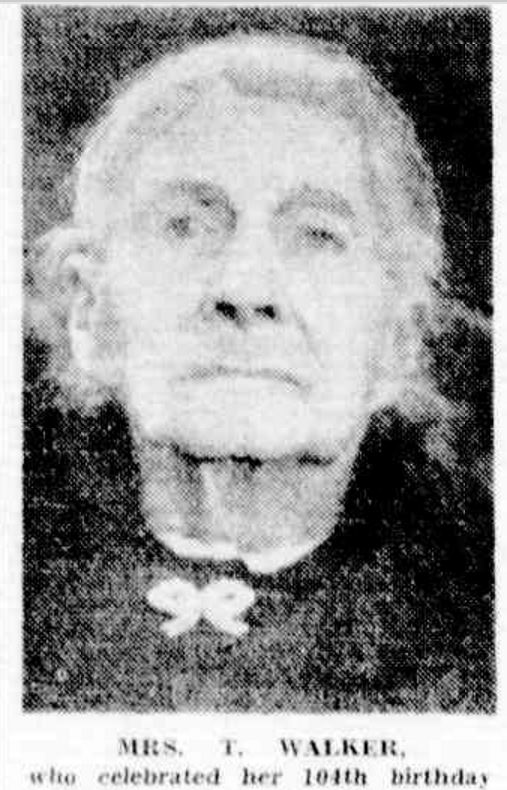






















































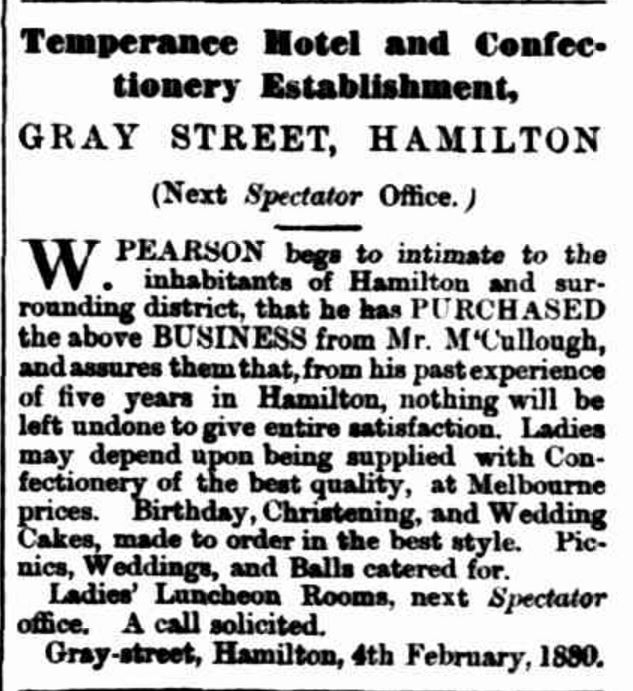








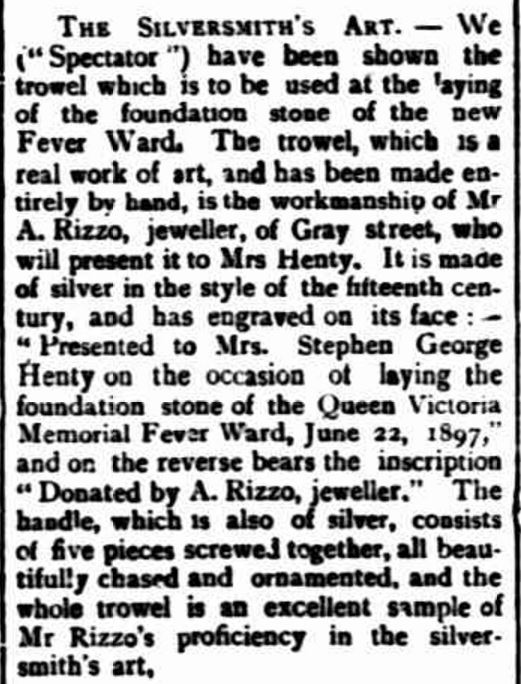
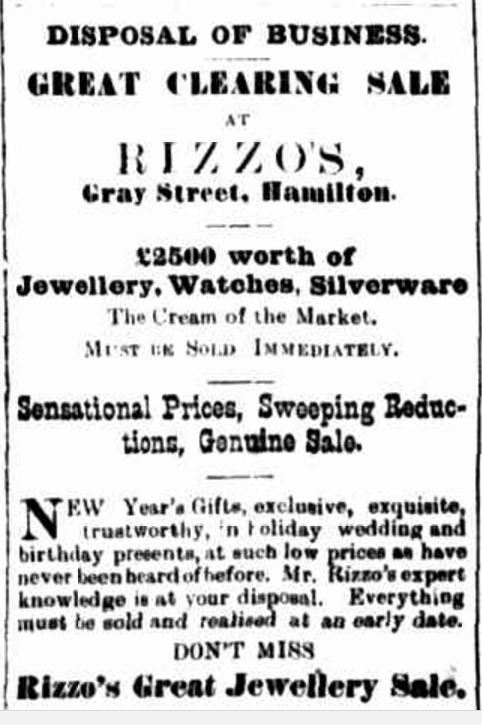
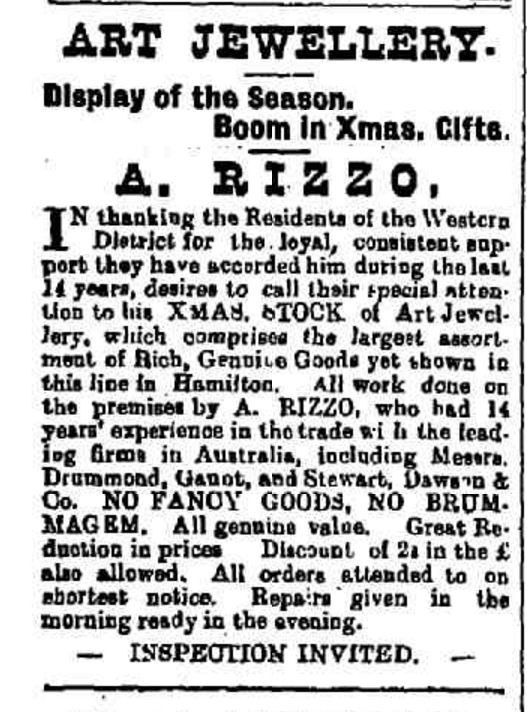



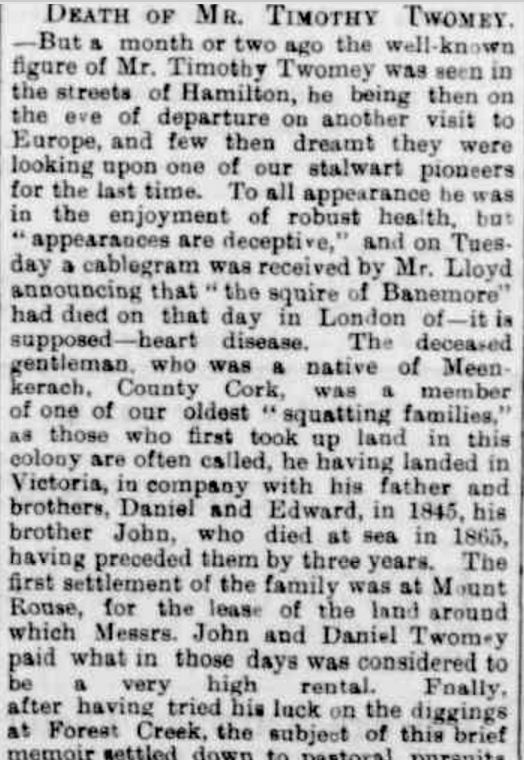























You must be logged in to post a comment.